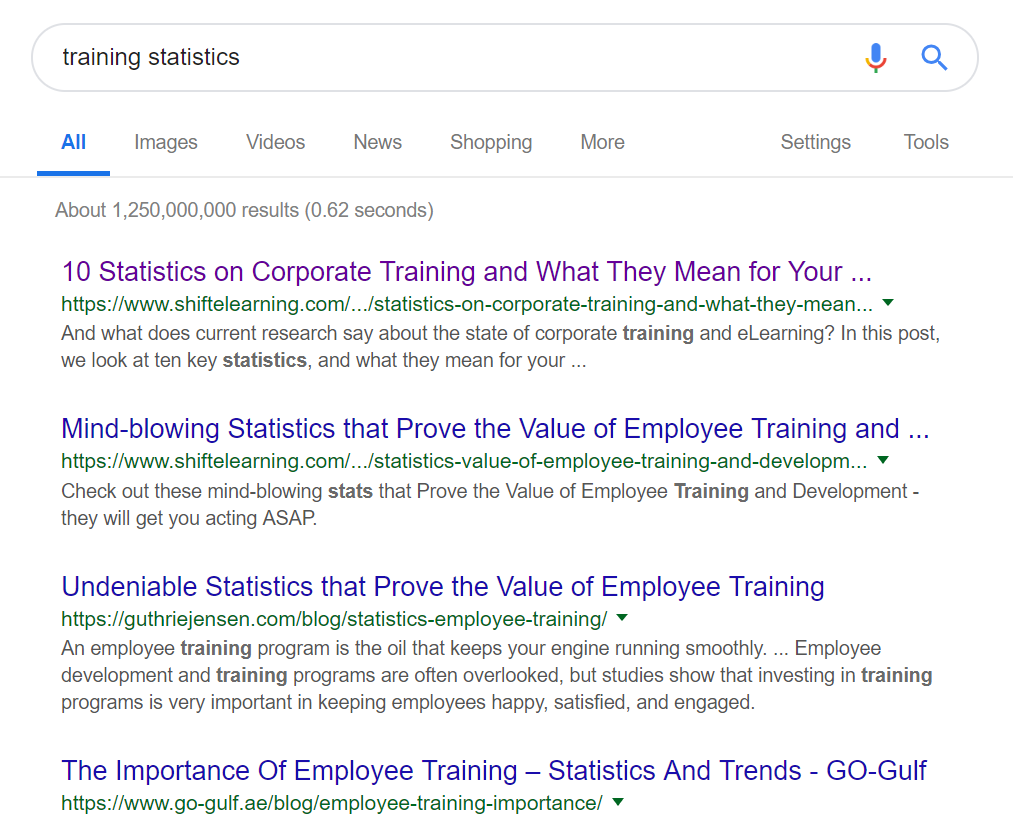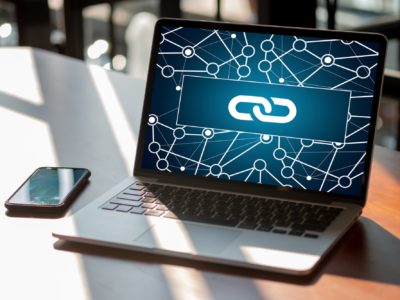Disclaimer: This post does not claim that all infographics and all companies can build 100 links to one infographic. This post is about how content marketers can find and maximize a golden opportunity like this one within their niche.
The Background
The client is Guthrie-Jensen Consultants, a Philippine-based training and consultancy firm. They are one of the easiest clients to work with and their vertical has enormous potential since they offer different types of training programs.
During the content strategy phase, I chanced upon an article by World Economic Forum about the skills one should have to be successful by the year 2020 or the start of the Fourth Industrial Revolution. I thought that if it’s turned into visual content that it would be a great linkable asset since it’s a top funnel topic and it transcends different industries. Here’s how it turned out:

After producing the content, I relentlessly promoted it along with another Online PR Specialist. A year has passed and it has gained more than 100 backlinks since, including one from an article by our primary source – World Economic Forum (DA 91).
Here are five lessons I learned from the constant experimentation and hundreds of emails I sent out to promote this infographic.
No Industry is an Island
As mentioned earlier, this infographic is applicable to a lot of industries. Apart from HR and recruitment, we were able to promote this infographic to the manufacturing, tech, education, and marketing sectors. In fact, there are two specific sections in the infographic dedicated to enumerating the industries and jobs that will greatly benefit from the technological revolution. Because of that, we were able to expand our prospect list outside of the ones we would normally reach out to.
You, too, can apply the same strategy by thinking of ways other industries will be interested in your content. One such way is to expand your topic outside of the industry where you belong. This will give you more opportunities for promotions and link building.
Evergreen is not Always the Way to Go
Most of the top performing content in terms of links are evergreen, but this article is not. How come it earned a lot of links?
It’s simply because everyone is already trying to create evergreen content, which means that the evergreen topics you can produce within your industry have most likely been already published by your competitors.
I did try to create generic evergreen topics for Guthrie-Jensen like 10 Warning Signs of Unhappy Employees and Undeniable Statistics that Prove the Value of Employee Training. They both did well but it was difficult to outperform articles by TINYpulse and Shift elearning with the same topics.

Instead of creating a timeless piece, we made this a timely one. If there’s one characteristic that could trump timelessness, it’s timeliness. This is why apart from evergreen content, exclusive news articles are also highly linkable.
This article has the perfect blend of urgency and longevity because the skills must be achieved by everyone before 2020 (but three years is still a long time). This attribute also motivated me to promote this content and encourage site owners to publish this content as soon as they can, because after 2020, it may no longer be relevant.
Have a Sense of Ownership
This might seem a bit arrogant, but I believe that a big part of the success of this campaign is because of the meticulous work I put into the entire process. I personally developed the topic after seeing data from the UN World Economic Forum Website. I wrote the outline, edited the article and infographic copy, guided the designer with my vision, and promoted it to multiple sites along with another Online PR specialist.
I’m not saying that I’m a great content strategist. I’m saying that there’s a certain level of confidence a content promoter needs with the content he or she is promoting in order to do a good job. Continuity in carrying out the initial vision is also a big factor. Because I have a lot of trust in the content that I created, I promoted the content for one whole year even if other subcampaigns for this infographic were not so successful.
If you work with a team of link builders, it’s important to demonstrate and convey the confidence in the content you made. You also have to ensure continuity when you turn over the promotions and link building to somebody else, if you want that content to consistently earn links. Communicating which campaigns worked and which ones did not is important, so your team members know the next campaigns to pursue.
Stay on course
Most linkable content have short outreach and promotions lifespan. Once new content is published, link builders typically stop promoting the last one and move on to promote the new one. I’m pretty sure that most content teams operate this way, too. This is because it’s rare for a piece of content to achieve a lot of links.
In the case of this infographic, I’ve noticed that my conversion rate is better than previous infographics and all of the campaigns under this infographic got at least three links. So even though we were publishing other linkable content, I prioritized this piece and let the other link builders promote the new ones.
Similarly, if you have an infographic that’s performing above your average conversion rate, continue promoting that content until your reply rates and conversions are close to 0%, especially if you don’t regularly produce linkable content.
Create Your Luck

Most people would immediately attribute the success of this infographic to luck since almost half of the links are natural or at least if the above graph will be the sole basis. However, upon checking how these sites came across this infographic, the data reveals that they found it from the sites that accepted our submission and pitches. In other words, we created multiple opportunities for our infographic to be seen by other content creators.
With that said, if you have the resources, you can’t ignore even the smallest opportunities to promote your content (i.e. new site with a low DA/DR asking for 1,000 word article to accompany your graphic) because these can lead to more people seeing your infographic and possibly getting high-quality links.
Wrap up
Producing high-performing content does not stop after you’ve published a unique and creative content. It has to be paired with consistent and strategic promotions that will ensure maximum visibility and impact to your target audience.
Now that you’ve seen that it’s possible to get more than 100 links to a single page, why not try it on your site?







